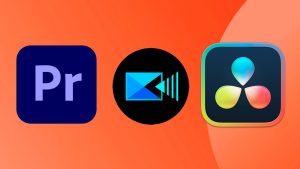How to Launch a Video Content Campaign Successfully
Creating video content is becoming increasingly accessible for all businesses, no matter the size. The cost of high-quality cameras is dropping, editing software is more intuitive than ever, and smartphones allow for on-the-go filming. However, if you’re planning to embark on a video content campaign, it’s essential to aim for success. Like any marketing strategy, it requires time and persistence to see results, especially if it’s a new approach for your brand. As you begin planning your campaign, consider these tips to ensure a strong start.
What Are Your Video Objectives?
Before you start applying makeup for the camera or investing in video gear, it’s crucial to define the purpose of your videos. Although boosting sales is the ultimate goal, you need to determine where your videos will fit within your marketing funnel and what message you want viewers to take away.
Video content can be tailored to any stage of the customer journey, helping to move prospects closer to making a purchase. Your videos should educate viewers and include a clear call-to-action. If you’re targeting potential customers, the call-to-action should encourage them to move forward in their buying journey. If the video is aimed at current customers or brand advocates, it should motivate them to share the content.
Videos offer unique advantages over other formats – they are easier to consume, add a visual dimension to your message, and have a higher potential to go viral. Leveraging these strengths in alignment with your goals can provide the boost your marketing strategy needs.
Are You Equipped and Skilled for Video Production?
Producing high-quality video content requires more than just a camera. It’s important to avoid common pitfalls like poor sound quality, awkward performances, clumsy editing, or dull content. To give your video campaign the best chance of success, ensure you’re prepared with the right tools and expertise.
Start by securing the necessary equipment, such as a high-quality camera, proper lighting, and good microphones. Professional-looking videos should be bright, have clear audio, and maintain a polished appearance. It’s beneficial to have someone on your team who understands how to create a well-lit set and manage the camera, especially if you plan to shoot from multiple angles.
For videos that don’t involve a live presenter, such as software tutorials or video presentations, you’ll need screen capture software. Even then, a good microphone is essential to capture high-quality audio that complements the visual content.
Finally, you’ll need editing software and the skills to use it effectively. Editing can correct mistakes from filming, balance audio levels, combine footage from different takes, and transform a decent video into something exceptional.

Which Platform Will You Use?
The platform you choose to host your videos will influence both the content you produce and its effectiveness. Each platform has unique features and algorithms that can affect the success of your video campaign.
YouTube
YouTube remains the leading platform for video content. As a search engine for videos, it uses complex algorithms that emphasize video retention time and subscriber count. To grow your audience and rank higher in search results and suggested videos, focus on getting viewers to watch your videos in full and subscribe to your channel.
Since YouTube functions as a search engine, applying standard SEO practices like including relevant keywords in your video titles and descriptions can help your content be found more easily.
Social Media
Videos on social media platforms like Facebook, Instagram, and Twitter function differently than on YouTube. People don’t typically search for videos on these platforms; instead, they encounter them organically in their feed. To maximize visibility, focus on growing your follower base and encouraging shares from your current audience.
Your Website
Hosting videos on your own website can be a strategic advantage. It allows viewers to stay on your site, making it easier to direct them to a specific call-to-action and track their engagement. Additionally, you can combine video content with written content for a more comprehensive approach.
The trade-off is that hosting videos on your site limits your reach. While YouTube can attract viewers who are browsing similar content, your site relies on users already being there, making it harder for new audiences to discover your videos.
Creating Compelling Content
To keep viewers engaged, your content needs to be both informative and entertaining. Think about why Bill Nye the Science Guy was a staple for students in the 90s – he made learning enjoyable.
Your video content should educate your target audience while persuading them that your product or service is the best solution for their needs. While you could simply present data and facts, doing so in a dry manner won’t capture attention. Presenting the same information with enthusiasm, humor, and creativity will make your videos more enjoyable and memorable.
Now that you’re equipped to start your video marketing campaign, remember that success takes time. As you continue to produce and refine your videos, you’ll gather valuable data that can guide the future direction and growth of your campaign.
Got questions about starting a video content campaign? Need tips on how to make your videos both engaging and professional? Contact us if you need any help or have any questions!
